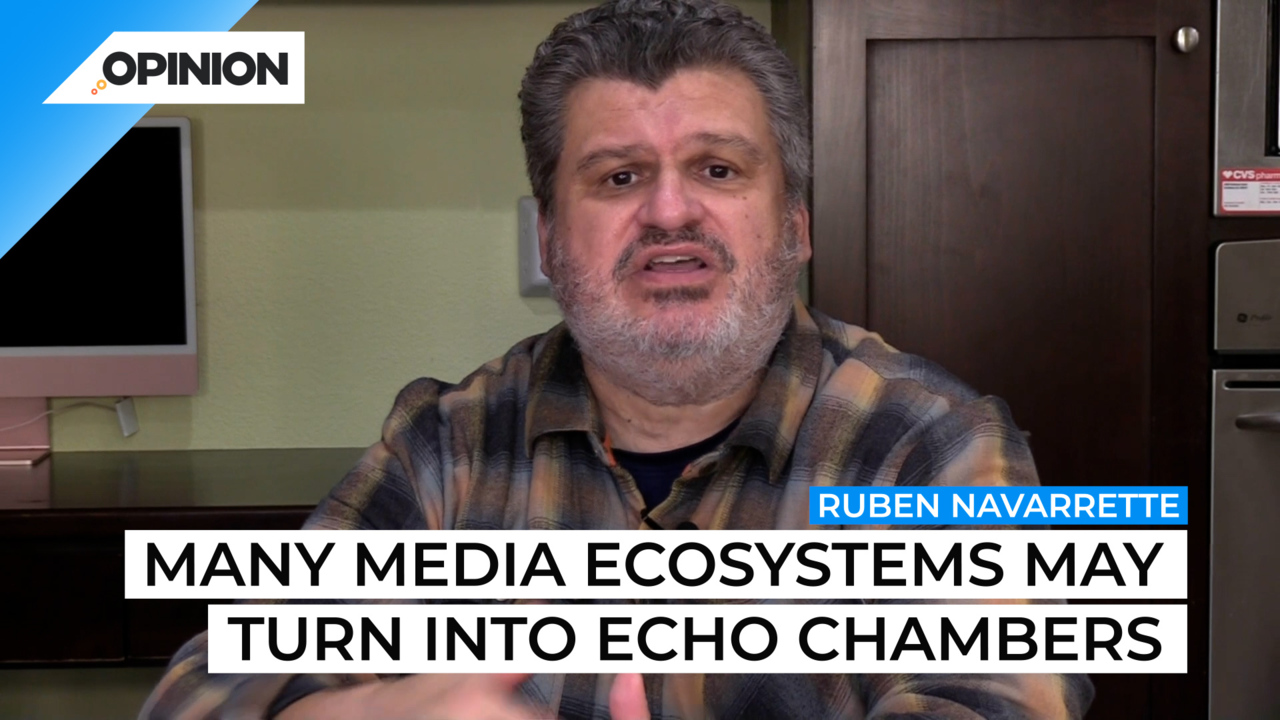
Commentary
-
Our commentary partners will help you reach your own conclusions on complex topics.
I predict that in the new year, the media revolution may not be televised, but it will be available on demand for digital viewing on the electronic device of your choosing.
As you probably have noticed, many of the traditional forms of media that those of us in Generation X, now between the ages of 42 and 57, grew up consuming during the 1970s and 80s are withering. The competition for eyeballs and eardrums has never been stiffer. And newspapers, magazines, radio stations and television networks simply can’t keep up.
Many of them are scaling back, coming apart or shutting down altogether. The smart ones, however, are going digital. Media has become a highly personalized product. Americans don’t just get our news on demand. That’s a given. We can now arrange to get the kind of news and only the kind of news that interests us.
If I have zero interest in stories about science, I can choose to fashion a newsletter that gives me tons of information, comes directly to me, not an ounce of what I get will be about science.
To quote an advertising slogan for my youth, “Hold the pickles, hold the lettuce, special orders don’t upset us.”
If we can get a hamburger whenever we want, exactly the way we want it, why can’t we get our media that way? Well, today of course we can. These days, Americans have more choices than ever, and many of them have chosen not to believe or trust big media.
I predict that in 2023 this trend will continue to intensify. Traditional media outlets will find themselves more and more on the defensive, having to prove that they’re fair and not biased in one direction or the other. Still, the public will become increasingly suspicious that the national conversation is being shaped by people who don’t think like them or see the world the way they do.
Meanwhile, the new media labels will expand their offerings, and new infotainment brands will spring up. Bloggers, columnist, media entrepreneurs will continue to build their personal media ecosystems without needing or craving validation from the stalwarts of big media.
The good news is that media consumers will continue to have more and more choices, and independent thought is likely to thrive. After all, less corporate influence should result in greater independence.
The bad news is that many of these ecosystems may turn into echo chambers. So if you go into an ideological cavern to be around like minded people, your experience is going to be stifling and one dimensional.
Either way, there’s no going back. Gone are the days of media monopolies and those who run media companies trying to tell us not just what happened, but what to think about what happened.
As a child in the 1970s, I grew up watching a color television set with just three channels, one for each major TV network. Then came cable and satellite and streaming. And well you get the picture.
In the 1990s, when I began my career as a journalist, many U.S. cities had just one newspaper. My teenagers don’t even know what a newspaper feels like in their hands. In the 2020s, the major media companies have gone from trying to control and shape and manipulate new media to more often being overrun and outplayed by them. They’re still playing catch up. These media trends are unsettling. Change usually is, but they’re likely to be positive, especially if they lure consumers away from the extremes and toward the place where we all need to be: the center. If that happens, I predict we Americans will be better off.
-
Will Trump’s second term be any better than his first?
Many Americans remain unsure of what to expect from a second Trump presidency. President-elect Donald Trump has increased his attacks against the free press and rival politicians, nominated controversial loyalists for top posts in the intelligence and military enforcement sectors, and continues to push a range of conspiracy theories. On the other hand, it is… -
Did Democrats learn anything from 2024 election?
Six weeks after the presidential election, Republicans are celebrating, while Democrats are still debating who to blame for Vice President Kamala Harris’ loss. Some Democrats argue that focusing too heavily on criticizing President-elect Trump was a flawed strategy. Others admit that their policies on immigration and inflation simply didn’t resonate with voters. In the video… -
MSNBC’s Scarborough, Brzezinski kiss the ring at Mar-a-Lago
MSNBC’s “Morning Joe” hosts Joe Scarborough and Mika Brzezinski traveled to Mar-a-Lago to privately discuss “resetting” the news media’s relationship with Donald Trump following his victory in the November 2024 elections. That visit has been criticized by many on the Left as an act of cowardice or preemptive submission towards a man who many view… -
Trump’s plan for mass deportation is a guaranteed disaster
One of President-elect Donald Trump’s most controversial campaign promises involved the forced mass deportation of non-citizen, non-green card immigrants from the United States, a tricky goal which some experts say would face both legal and logistical hurdles. Estimates place the number of suspected illegal immigrants currently living in the U.S. somewhere between 7-12 million. Despite… -
Trump’s unqualified cabinet nominees show it’s all about loyalty
President-elect Donald Trump’s first controversial pick for attorney general, Matt Gaetz, withdrew after meeting with a number of Senate Republicans. Trump quickly moved on and, in a series of rapid announcements, finalized what his aides describe as a “unified, loyal, MAGA-driven administration.” In the video above, Straight Arrow News contributor Ruben Navarrette argues that Trump’s…
Latest Opinions
-
 Getty Images
Getty Images
Trump announces pick for US ambassador to Panama
-
 Getty Images
Getty Images
‘Squid Game’ returns to Netflix for season 2
-
 Reuters
Reuters
‘Family dispute’ leads to 3 people shot, 1 stabbed at Phoenix airport
-
 Reuters
Reuters
Incoming ‘border czar’ Homan says he will bring back ‘zero tolerance’ policy
-
 AP Images
AP Images
Survivors remember victims 20 years after Indian Ocean tsunami killed 230k
Popular Opinions
-
In addition to the facts, we believe it’s vital to hear perspectives from all sides of the political spectrum.


